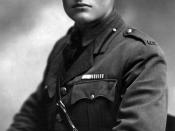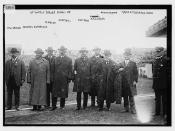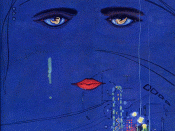F. Scott Fitzgerald's The Great Gatsby and Ernest Hemingway's The Sun Also Rises both define the culture of the 1920s through the behaviors and thoughts of their characters. The characters in both novels have a sense of sadness and emptiness, which they resolve through sex and alcohol. This can be attributed to the disillusionment surrounding the Great War, better known as World War I. Jay Gatsby in The Great Gatsby represents the Jazz Age and high life of the 1920s, in contrast to Brett Ashley as the New Woman of the 1920s and Jake Barnes's embodiment of the Lost Generation in Hemingway's The Sun Also Rises. The Great Gatsby illustrated people reaching for the "American Dream." The Sun Also Rises instills a "permanent emotion," what many members of the "Lost Generation" searched for, into the reader by presenting a sense of nostalgia for the better past.
Fitzgerald's 1920s was full of life, flappers, money, alcohol and jazz.
It was a time of happy spirits, never ending wealth and the American Dream. Many believed that through hard work and perseverance one could be as rich as they wanted. One could own a mansion and a car and the latest fashions and live the high life. The flapper, a major symbol of the 1920s, wore their hair short and bobbed, make-up that was applied in public, and baggy short dresses that exposed skin. She thought fast, talked fast and was perhaps even a bit brazen. "They're all desperadoes, these kids, all of them with any life in their veins; the girls as well as the boys; maybe more than the boys."(Fabian) Money encompassed the spirit of the times. It represented the pop life, modern days, happiness and the American Dream and everybody wanted it. It seemed that there was not a...


